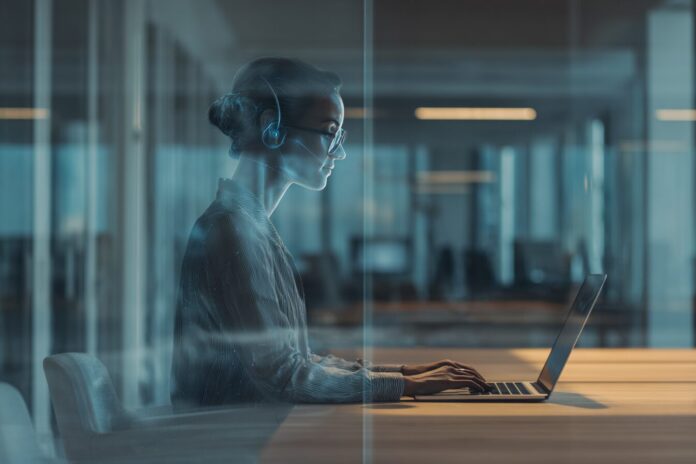Your Digital Twin Is Here—But Is It Ready to Work?
With AI technology advancing at lightning speed, the concept of a digital doppelgänger—a virtual AI twin capable of mirroring your skills and knowledge—has transitioned from science fiction into the modern workplace. Most importantly, this paradigm shift pushes us to consider how these digital replicas can enhance efficiency while still requiring human oversight.
Because technologies like these integrate advanced analytics and machine learning, they are rapidly becoming part of our everyday operations. In addition, industries have begun to see their benefits, from streamlining repetitive tasks to offering creative collaboration opportunities. Therefore, understanding this blend of tech and human input is essential to maximizing productivity.
What Is an AI Doppelgänger?
An AI doppelgänger refers to an artificial intelligence model designed to replicate specific skills, knowledge, and decision-making abilities that an individual or team possesses. This technology goes beyond simple automation; it performs sophisticated tasks such as writing insightful articles, analyzing complex datasets, and even recreating vocal nuances for multimedia projects.
Indeed, these digital twins are not mere copies but are strategically crafted to extend the reach of human potential. Because they are trained on personalized data inputs, the more time invested in refining their algorithms, the better they mimic the unique traits of the user. As described in Quantilus’ analysis, they can eventually begin to exhibit aspects of creative reasoning that were once thought solely human capabilities.
How Can an AI Doppelgänger Support Your Daily Work?
AI doppelgängers shine notably when employed on repetitive and time-consuming digital tasks, thereby allowing professionals to refocus on high-priority issues. Because these systems are designed to handle up to 90% of mundane busywork, users can dedicate more time to strategy, creative brainstorming, and relationship building. Moreover, as detailed by Deloitte, industries are realizing significant returns from this technology.
Most importantly, these digital twins can also act as invaluable brainstorming partners. For example, content creators find that AI-generated drafts, outlines, and topic ideas facilitate the building of richer and more engaging narratives. Besides that, marketers benefit from consistently on-brand email and social media campaigns, as highlighted by Andrew Chen. Because the process synergizes human creative direction with machine efficiency, it paves the way for sharper insights and improved personal productivity.
Real-World Examples: AI Doppelgängers at Work
In modern software engineering, AI agents participate actively by generating, reviewing, and even debugging code. As engineers are freed from repetitive tasks, they can concentrate on complex problem-solving and innovate new solutions. Because this technology adopts a task-specific approach, it ensures that human ingenuity remains central to strategic decisions.
In music and media, AI doppelgängers empower artists to produce performances across languages and genres simultaneously. This merges cultural versatility with technological prowess, as seen in detailed case studies. Moreover, marketing professionals also find these digital twins instrumental in drafting newsletters, managing social posts, and responding to clients with a consistent tone—all while leaving the final creative touches to human judgment.
What AI Doppelgängers Can’t Do—Yet
Despite impressive advancements, AI digital twins possess inherent limitations. While they can replicate styles and analyze large datasets, they cannot fully embody human intuition or emotional intelligence. Because ethical judgments and creative leaps require lived experience, these AI twins still fall short of replacing genuine human insight.
Most importantly, the quality of the AI’s output heavily depends on the clarity of its input. Generic or ambiguous data can lead to misinterpretation, which is why regular review is essential. As mentioned in HubSpot’s experiment with ChatGPT, substantial human oversight is needed to avoid errors in nuance or contextual meaning.
Risks, Privacy, and Trust
Privacy and data security are critical when incorporating AI doppelgängers into professional workflows. Because these systems process sensitive data and proprietary workflows, safeguarding against breaches becomes a priority. Organizations need to implement stringent security measures and constant monitoring, as failures in this area could lead to significant risks.
Therefore, alongside reevaluating cost and productivity benefits, it is vital to establish trust in these systems. According to insights from Andrew Davis, building a robust data privacy framework remains paramount. In addition, regular audits and staff training can help mitigate the risks associated with relying on digital doppelgängers.
How to Get the Most from Your Digital Doppelgänger
To leverage the full potential of your AI twin, begin with well-defined tasks and clear instructions. Because the clarity of input greatly influences the output, comprehensive training is needed to achieve optimal results. Most importantly, such collaboration acts as a force multiplier by handling routine work efficiently.
Besides that, treat your AI as a creative collaborator. Complement its systematic abilities with your judgment and creativity, thereby ensuring that the final output meets high quality standards. Regularly updating and reviewing its performance is essential, as this ongoing dialogue with AI fosters alignment with evolving personal and business objectives. In this way, the balance between machine precision and human insight can truly transform professional productivity.
Conclusion: Augmentation, Not Replacement
In conclusion, can an AI doppelgänger help you do your job? Absolutely, yes—especially when its strengths are balanced with human insight and creativity. Because an AI twin can multiply your impact and streamline tasks, it serves as a potent tool in the modern digital workplace.
Most importantly, these digital doubles should be viewed as an augmentation rather than a replacement for human capabilities. By deliberately integrating AI with clear goals and oversight, professionals can unlock unprecedented productivity and innovation. Therefore, the future of work will likely see an empowering collaboration between human expertise and cutting-edge AI technology.



